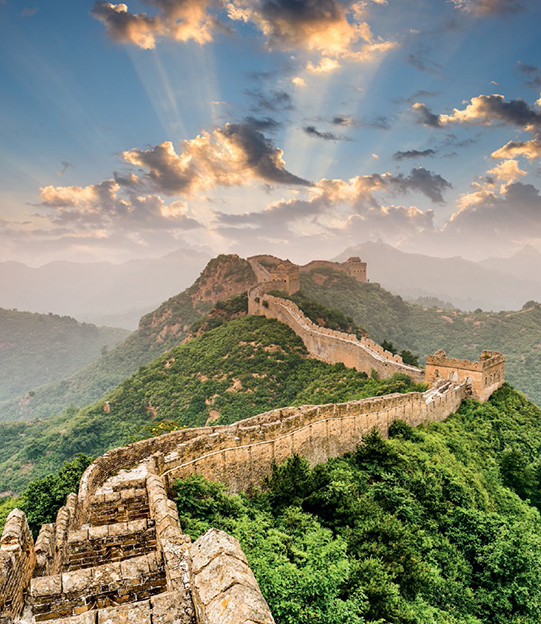c. 1370–1640
Great Wall of China
Since prehistoric times, humans have been modifying the Earth’s surface. Clearing of forests and tilling of soil for farming as well as digging of irrigation ditches and canals are a few pragmatic low-tech examples. Other perhaps less pragmatic but still impressive higher-tech ancient examples include earthen and stone monuments like Stonehenge and the Great Pyramids at Giza, and sophisticated aqueducts in Mesopotamia and the Roman Empire. By far the grandest and arguably most pragmatic example of such large-scale ancient architectural and civil engineering projects, however, is the Great Wall of China, which runs east to west roughly along the border between China and Mongolia for more than 5500 miles (8850 kilometers).
Archaeologists trace the creation of the earliest segments of the Great Wall back to the seventh century BCE. That relatively primitive wall (parts of which were apparently just fortifications made of dirt and rubble) was rebuilt in the third century BCE by China’s first unifying emperor, Qin Shi Huang, and essentially the entire wall has been updated and rebuilt multiple times since then. Most of the modern Great Wall of China is from the Ming Dynasty, which ruled from the late fourteenth to mid-seventeenth centuries. Typical segments are more than 25 feet (8 meters) high and 16.5 feet (5 meters) wide, and some sections are built across treacherous mountain terrain with rugged topography. It is truly a remarkable and historic engineering achievement, especially given the limited tools and techniques for civil engineering available at those times for work on that kind of scale.
As the orientation along the Mongolian border suggests, the primary purpose of the wall was defensive—large and well-armed fortifications could help keep various nomadic invaders from the north from getting into the country. However, several key branches of the Wall also served as a series of immigration control and customs/trade control stations along the Silk Road between eastern Europe and the markets of inland and coastal China. Now a major tourist destination for visitors to China, the Great Wall is often credited by historians as being a key part of the strategy to maintain and defend a unified China.
SEE ALSO Stonehenge (c. 3000 BCE), The Spice Trade (c. 3000 BCE), The Pyramids (c. 2500 BCE), Aqueducts (c. 800 BCE), Civil Engineering (c. 1500), Hydroelectric Power (1994)
Part of the Great Wall of China, near Jinshanling, northeast of Beijing.
